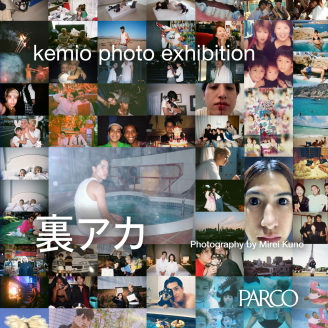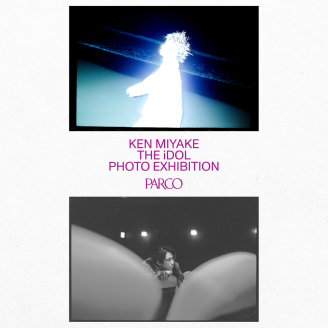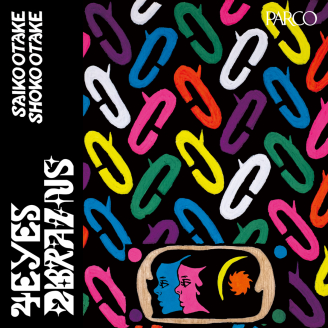Part 1 of the series | "Shibuya Culture Half a Century: The Cats of Koen-dori St. Talk-"
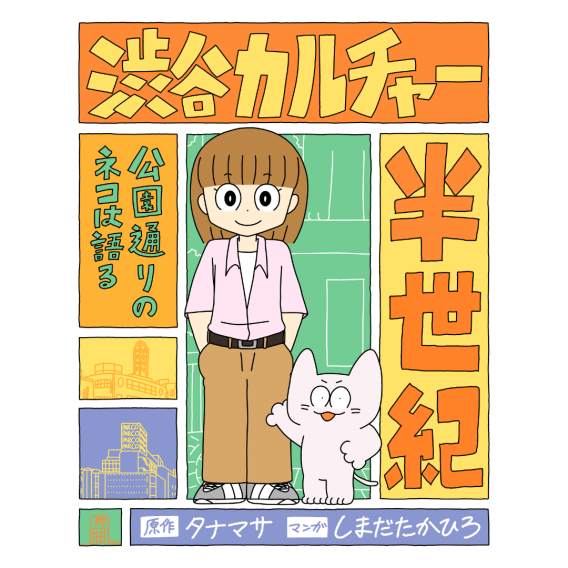

Shibuya PARCO has been appearing on Koen-dori St. for 51 years. 50 years since PARCO Publishing was established. Bunchan and Cat, university students, will deliver the city of Shibuya that Parco has been staring at for half a century and the culture story surrounding it!
[Character]
Bun-chan
University student. I learned about the culture around Shibuya from my cat for graduation.
Dr. Cat
I have lived in Shibuya for many years and have been watching the changes in culture.
He is 66 years old in human age.
Irregular serialization on PARCO Publishing Instagram!
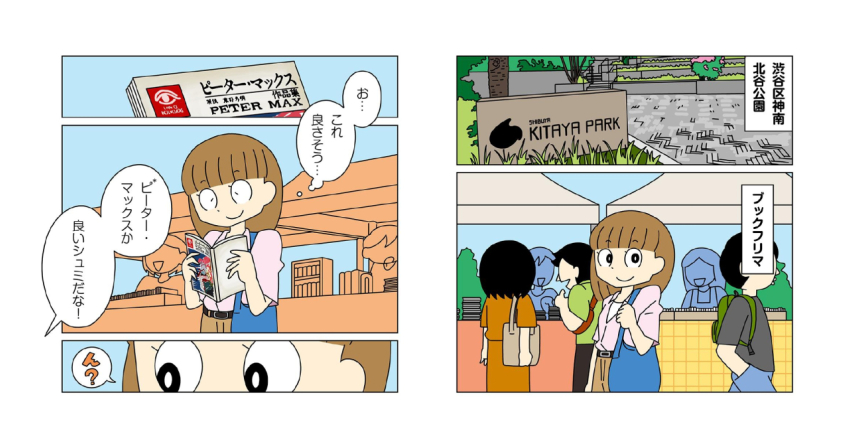
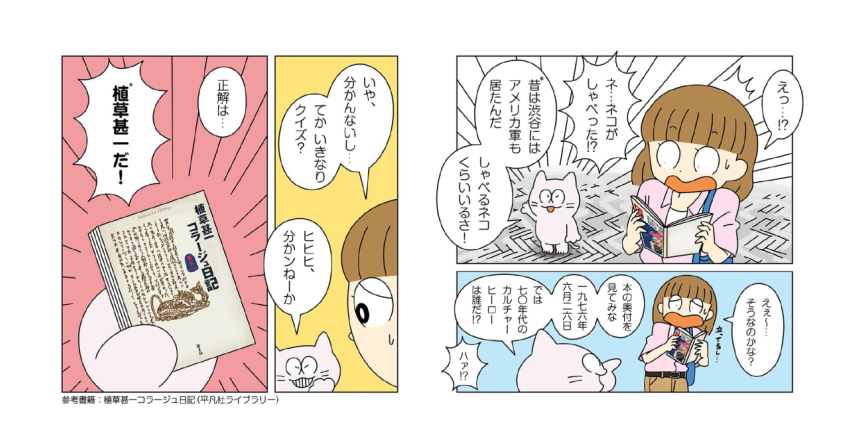
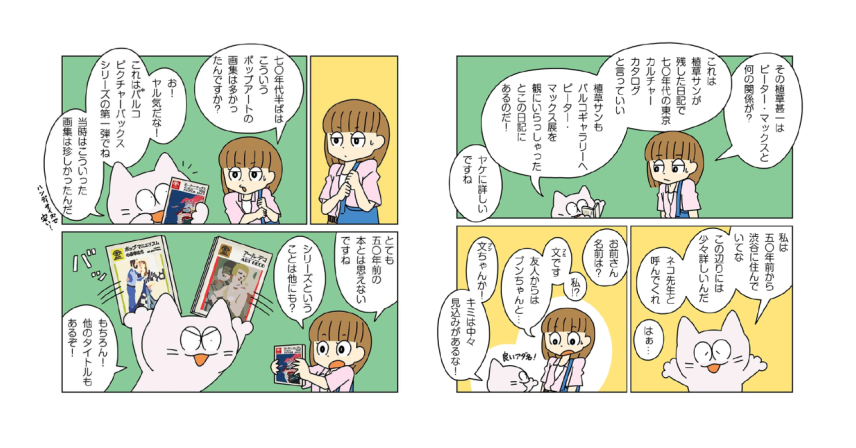
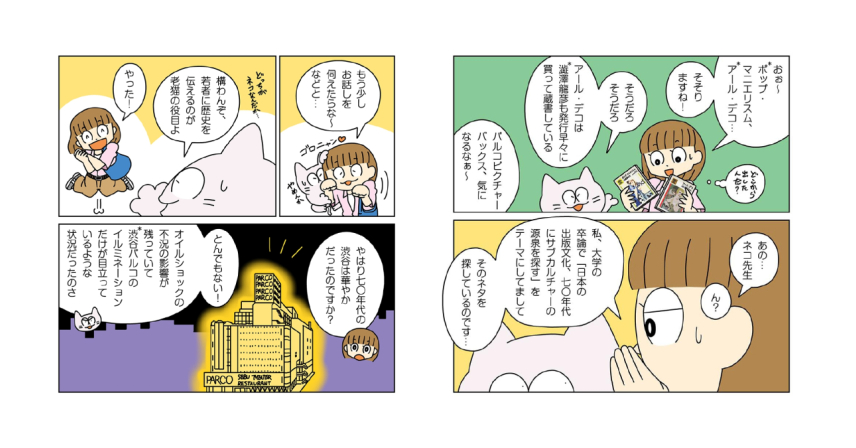
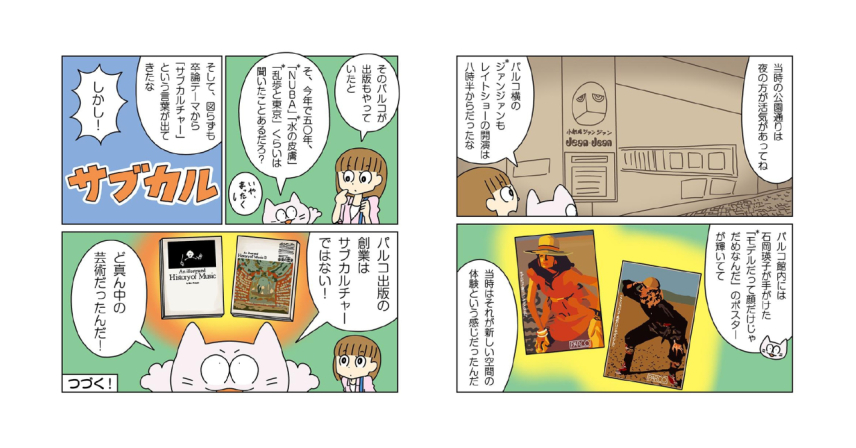
Detailed explanation of the term by Dr. Cat
●Peter Max (from 1937)
An illustrator that symbolizes POP art from the 1970s. He lives in the United States and is actually a German-born Jewish born in Berlin. I’m not the only one who thinks that influences the artwork of The Beatles Yellow Submarine.
●U.S. military
After the defeat of Pacific War, Washington Heights, a residential facility for the U.S. occupation forces, was located around present-day Yoyogi Park. Existing from 1946 until it was fully returned for the construction of the Tokyo Olympic Village in 1964. There is also a church, a theater, and a baseball field. It accounted for 16% of Shibuya-ku area.
●Jinichi Uekusa (1908 - 1979)
Commentary, essayist, columnist in film, jazz, English and French literature. His 1970s book has won a lot of youth fans. Lived in Keido, Setagaya Ward for a long time, Shibuya often appears in the Shibuya Parco building on its walking route. The huge diary I left was truly a culture catalog.
●Tatsuhiko Shibusawa (1928 - 1987)
His life almost coincides with Showa. The vast collection also includes four Parco Publishing books. The genre introduced and created by Shibusawa was called heretic, but now it became mainstream and left a big footprint. The house library in Kita-Kamakura was photographed on a poster at the Parco Book Center.
●Shibuya Parco
Opened June 14, 1973 (Thursday), the second store opened after Ikebukuro Parco. The advertising promotion had a great impact on Tokyo and Shibuya beyond the content of the store. The Seibu Theater on the upper floor was also not a theater attached to commercial facilities, but rather the software provided by Kimifusa Abe, Shuji Terayama, and Juro Kara was meaningful. In response to changes in Shibuya's city, youth targets, and media, PARCO's flagship was rebuilt and opened in November 2019. Beyond the pandemic of the 21st century, it has become a global customer base for not only hardware but also content.
●Jiangjiang (read as Janjang)
A small theater located in the basement of Tokyo Yamate Church. It is responsible for the accumulation of theater culture in Shibuya in the 1970s, including Seibu Theater, Shibuya Public Hall, NHK Hall. Classic performances such as Ionesco's "Class" and Chikuzan Takahashi Live were "competitive culture" different from the performances in Shinjuku and Ginza districts. However, in line with the end of the 20th century, its advanced activities have ended.
●Even models can't just use their faces (1975: AD Eiko Ishioka, C Takeo Nagasawa, P Noriaki Yokosuka)
Not only a masterpiece of Parco advertising, but also one of the top commercial advertising in Japan. It is also revolutionary that the look of the model does not intersect with the "watcher". The series of CFs and posters of models that look far away, saying, "Fashion can't just be imitated," will long be an image of Parco advertising. This masterpiece, including the debate as to whether it is the image of Parco, has been alive for 50 years.
●Oil shock
The 1973 Fourth Middle East War (Israel vs Arab countries) led to a sharp drop in oil imports and price increases significantly. Japan at the time, which was literally "warranted," caused a panic of rising prices and shortages in many industrial sectors, which had little stockpile and relied on oil. The contest for toilet paper is famous, but the lighting was also regulated, and the interior of the streets and buildings became dark due to the thinning of fluorescent lights. Shibuya Parco just after opening, the only illuminations are lit in the dark Koen-dori St.. I remember the cat too. This is the legend of Masuda's decision to make it stand out now.
●Parco Picture Bucks
Parco Publishing Series of the 70s 80s. He started in the field of art such as "Pop Manierism" and "Art Deco" under the theme of "Memorial Device for Returning the Creation of Art and Urban Creation", but published a wide range of themes such as "Performance of Architecture", "Apollia of Modern Architecture", Urban Theory "Ranpo and Tokyo", "Magical Hair" and "Poetics of Electronic Design". In addition to translation, he published 38 works by Genpei Akasegawa, Suehiro Tanemura, Arata Isozaki, etc. Existing art publications focus on titles such as "impressionist" and "Greek Sculpture", and the introduction of minor themes such as Tokyo theory impressed publishers with "advanced" and "challenging".
●PARCO VIEW
Eiko Ishioka Prodise "Nanasai Yumegen" was a large-scale project that expanded the media from photobooks to CFs and posters. This Parco art production scheme is a masterpiece of Parco Publishing by co-authoring "Photography of Water Skin Kenji Sawada" and "NUBA Leni Riefenstahl Photo Collection" under the title of PARCO VIEW. Since then, it has been serialized as a unique route for artists, creators, and writer collaborations. 20 items were published. An up-and-coming illustrator of Itsuko Azuma, Peter Sato and Sawako Goda. In addition to a collection of contemporary works by photographers, Nobuyoshi Araki and Kazumi, "Portrait Myth", which introduces the painter Tamara de Rempicca of the 1920s, becomes a hot topic.
--
■Original: Tanamasa
Someone in Parco. The existence of a living character in the company. My future dream is to become a bookstore owner.
■Manga: Takahiro Shimada @tkhr_smd
Born in Shiga in 1994. Lives and works in Tokyo.
Mainly active in publications and the web.
Editing: PARCO Publishing Editorial Department



